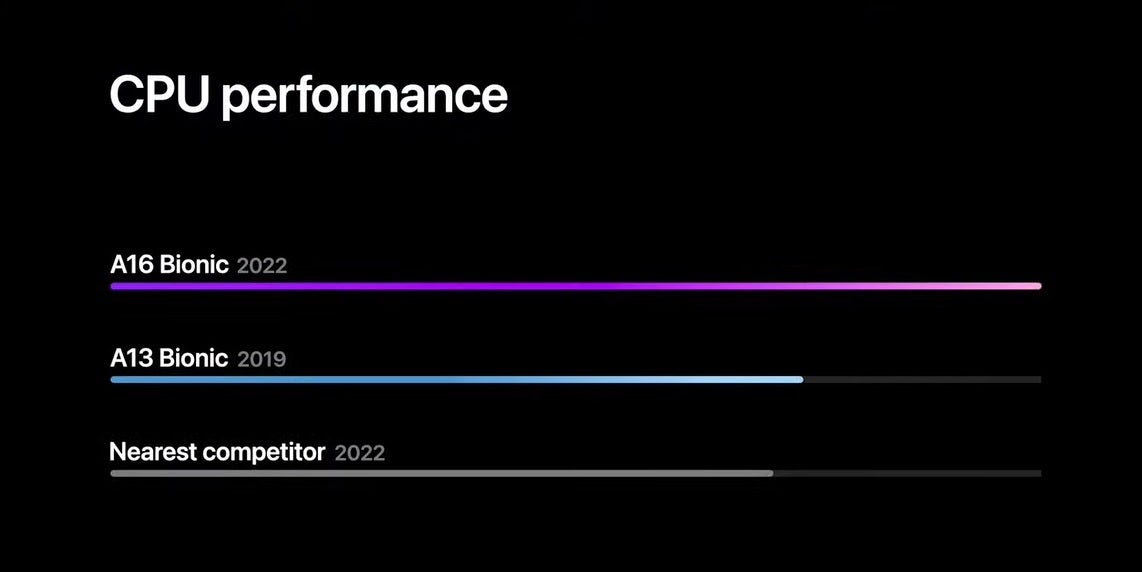Apple introduces the "fastest chip ever in a smartphone"
We may earn a commission if you make a purchase from the links on this page.

While introducing the iPhone 14 Pro series today, Apple also unveiled the A16 Bionic SoC which is the chipset that will power the new handsets. To be clear, the cheaper non-Pro models are sticking with the A15 Bionic, the chip currently used on all iPhone 13 models. The latter component is made using the 5nm process node by TSMC while the A16 Bionic uses a 4nm process node.
The lower the process node, the smaller the transistors which results in a higher transistor count for a chip. And that is very important since the more transistors employed, the more powerful and energy-efficient a chip is. While there are 15 billion transistors in the A15 Bionic, the A16 Bionic has nearly 16 billion transistors (the most ever in an iPhone). That is a smaller increase than we've seen in the past. For example, the A14 Bionic has 11.8 billion transistors and the A13 Bionic has 8.5 billion transistors.

The A16 Bionic chip will be equipped with 16 billion transistors, the most found on an iPhone
With the A16 Bionic, Apple says that it focused on three iPhone features: the display, the camera, and power efficiency. It features a 6-core CPU that includes two high-performance cores (that use 20% less power than the same cores on the A15) and four high-efficiency cores. The CPU is 40% faster than the competition, according to Apple, and the company calls it the fastest chip ever used in a smartphone.
Pre-order deals are right here for the iPhone 14, iPhone 14 Plus, iPhone 14 Pro, and iPhone 14 Pro Max!
The 16-core Neural Engine can handle up to 17 trillion operations per second helping to drive the iPhone 14 Pro models' computational photography. The 5-core GPU has 50% more memory bandwidth for improved gaming graphics and the Display Engine powers the Always-on Display and 1Hz refresh rate for the ProMotion screens.

Apple calls the new chip the fastest ever found on a smartphone
According to TF International analyst Ming-Chi Kuo, Apple's recycling of the A15 Bionic is not just a one-time thing that was caused by the chip shortage. Kuo says that Apple will continue with this strategy in the foreseeable future which means that next year the iPhone 15 and iPhone 15 Plus will use the A16 Bionic while the iPhone 15 Pro and iPhone 15 Pro Max will be powered by the A17 Bionic.













Things that are NOT allowed: